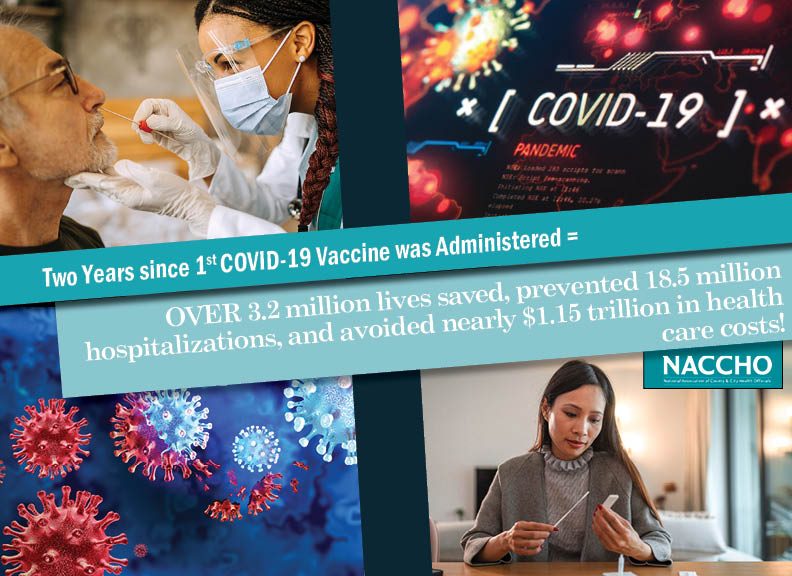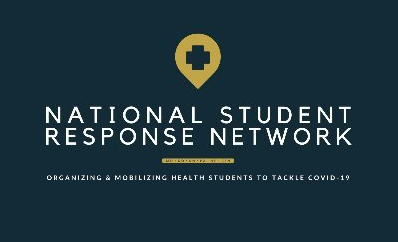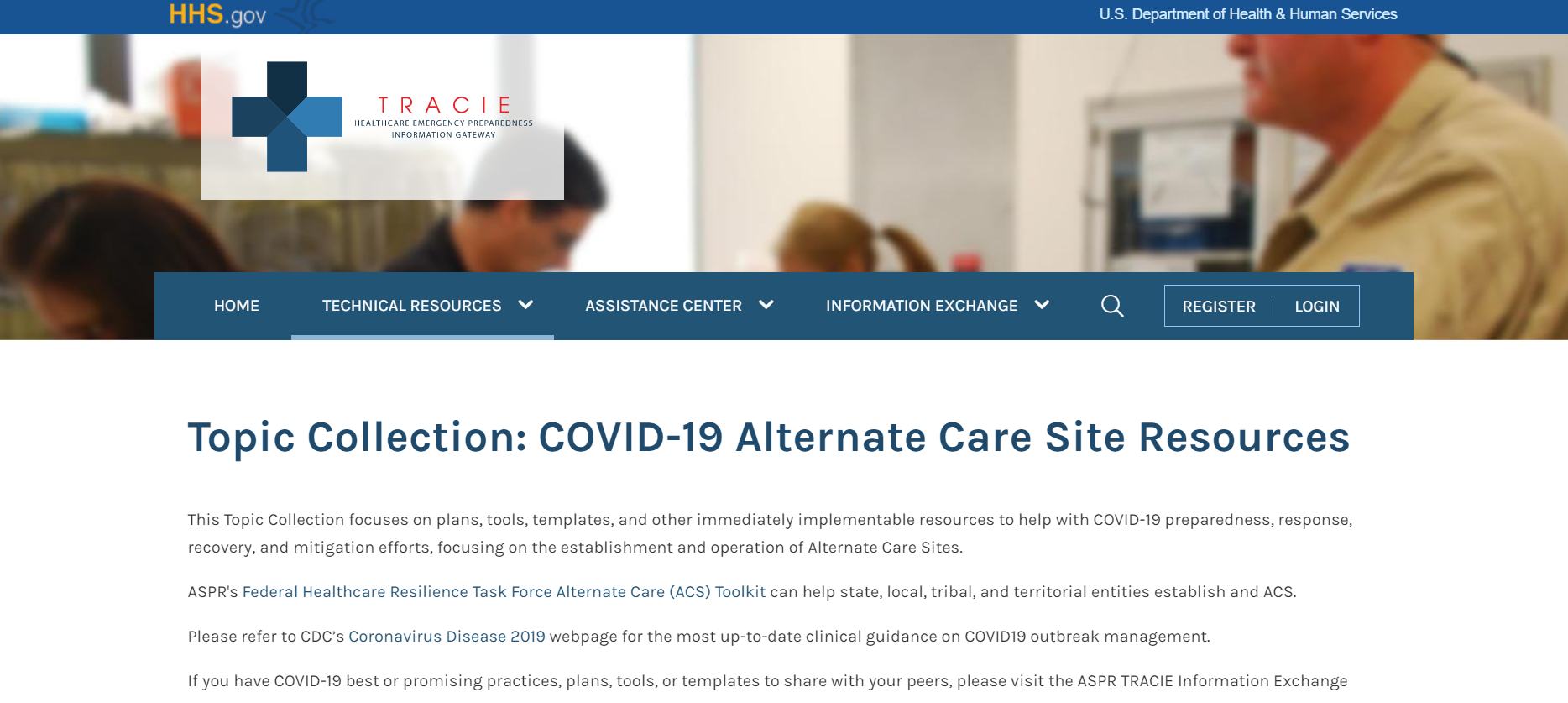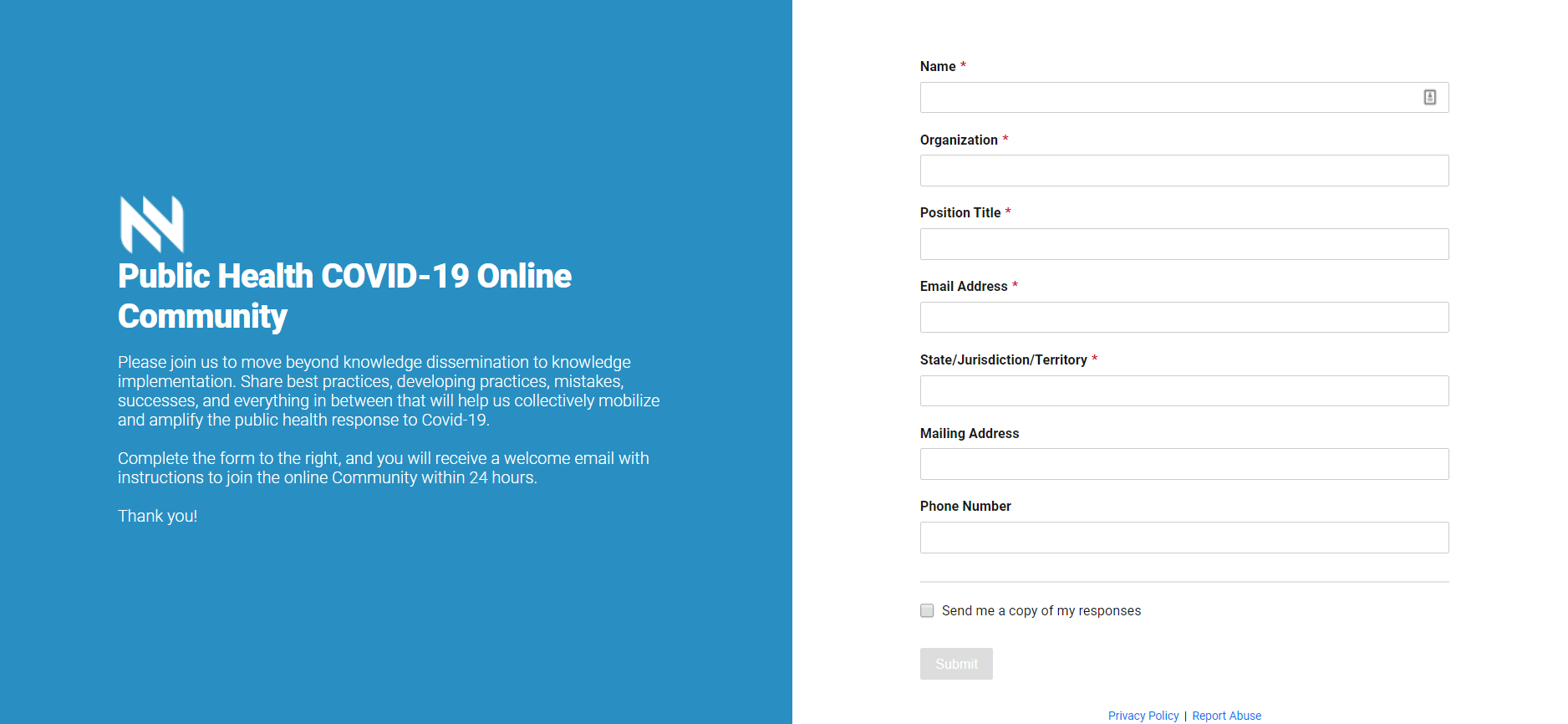Popular Categories
Strategies for Communicating with Vulnerable and Non-English Speaking Populations:...
This is part of a series of interviews with local health department staff who will present at the 2015 Preparedness Summit. Meredith...
Feb 04, 2015 | Katie Regan
NACCHO Staff Co-Author Disaster Medicine and Public Health Preparedness Journal...
Volunteer readiness is an important consideration for any volunteer organization that responds to emergencies. Adequate training is...
Feb 02, 2015 | Stacy Stanford
Local Health Departments Play a Key Role in Measles Outbreak Response
The CDC held a press conference on January 29 in response to the ongoing measles outbreak. State and local health departments are...
Jan 30, 2015 | Guest Author
Emergency Preparedness Funding and Ebola: A Look into the Efforts Being Made by a...
Infectious diseases continue to pose a threat to communities, with Ebola being in the spotlight over the last six months. The threat...
Jan 29, 2015 | Katie Dwyer
CDC Releases New Tool for Telephone Triaging Patients with Possible Influenza
The Centers for Disease Control and Prevention (CDC) has released a new tool that could be helpful to medical office and public health...
Jan 28, 2015 | Erin Roberts
Measles Outbreak Resources from the CDC
From January 1-23, 68 people from 11 states were reported to have measles, and most of these cases are part of a large, ongoing...
Jan 27, 2015 | Admin
Preparedness Policy Advisory Group January Report
The Preparedness Policy Advisory Group (PPAG) held its monthly call on January 14. NACCHO’s Chief of Government Affairs kicked...
Jan 26, 2015 | Katie Dwyer
23 Agencies Achieve Project Public Health Ready Recognition
NACCHO’s Project Public Health Ready (PPHR) has recognized 23 local and regional health agencies for their ability to plan for,...
Jan 22, 2015 | Rachel Schulman
Project Public Health Ready: A Tool for Improving Statewide Preparedness
A hurricane is fast approaching your region. How will evacuation and sheltering procedures work when your neighbors are all affected,...
Jan 22, 2015 | Rachel Schulman
Strategies for Communicating with Vulnerable and Non-English Speaking Populations: An Interview with Meredith Li-VollmerThis is part of a series of interviews with local health department staff who will present at the 2015 Preparedness Summit. Meredith Li-Vollmer, PhD, Risk Communication Specialist for Public Health – Seattle and King County, previews her session, “Reaching the New America: Communication Strategies with Immigrants for Health Departments of All Sizes.” At the session, Meredith […] Feb 04, 2015 | Katie Regan |
NACCHO Staff Co-Author Disaster Medicine and Public Health Preparedness Journal ArticleVolunteer readiness is an important consideration for any volunteer organization that responds to emergencies. Adequate training is cited as an important factor for volunteer retention, wiliness to deploy, and a greater reported confidence and perceived capabilitiy. In 2013, NACCHO conducted a survey of all MRC units in the country to assess unit administration, capabilities, and […] Feb 02, 2015 | Stacy Stanford |
Local Health Departments Play a Key Role in Measles Outbreak ResponseThe CDC held a press conference on January 29 in response to the ongoing measles outbreak. State and local health departments are working vigorously investigating the current multistate measles outbreak. Since January 1, 84 measles cases have been confirmed in 14 states, more cases than the median number of cases per year over the last […] Jan 30, 2015 | Guest Author |
Emergency Preparedness Funding and Ebola: A Look into the Efforts Being Made by a Rural Local Health Department in Ector County, TexasInfectious diseases continue to pose a threat to communities, with Ebola being in the spotlight over the last six months. The threat of Ebola has also increased attention on local health departments and their role in preparing for and responding to emerging infectious diseases. To better understand how local health departments are utilizing preparedness funding […] Jan 29, 2015 | Katie Dwyer |
CDC Releases New Tool for Telephone Triaging Patients with Possible InfluenzaThe Centers for Disease Control and Prevention (CDC) has released a new tool that could be helpful to medical office and public health clinic staff. The tool allows medical office staff to triage calls from patients with flu-like symptoms. Staff can use the tool to decide if their patient should begin taking antiviral medications prior […] Jan 28, 2015 | Erin Roberts |
Measles Outbreak Resources from the CDCFrom January 1-23, 68 people from 11 states were reported to have measles, and most of these cases are part of a large, ongoing outbreak linked to an amusement park in California. On January 23, the Centers for Disease Control and Prevention (CDC) issued a Health Advisory to notify local health departments and healthcare facilities about this […] Jan 27, 2015 | Admin |
Preparedness Policy Advisory Group January ReportThe Preparedness Policy Advisory Group (PPAG) held its monthly call on January 14. NACCHO’s Chief of Government Affairs kicked off the meeting with an update on the FY2015 spending bill passed by Congress in December and supplemental Ebola funding. The PPAG also reviewed and provided feedback on an updated smallpox medical countermeasures policy statement. In […] Jan 26, 2015 | Katie Dwyer |
23 Agencies Achieve Project Public Health Ready RecognitionNACCHO’s Project Public Health Ready (PPHR) has recognized 23 local and regional health agencies for their ability to plan for, respond to and recover from public health emergencies. Sixteen agencies from Florida, Louisiana, Michigan, and Tennessee earned PPHR recognition for the first time, and seven agencies from Virginia achieved PPHR re-recognition status. PPHR recognition reflects […] Jan 22, 2015 | Rachel Schulman |
Project Public Health Ready: A Tool for Improving Statewide PreparednessA hurricane is fast approaching your region. How will evacuation and sheltering procedures work when your neighbors are all affected, too? The local health department reports a suspected case of Ebola. Who at the state level should be notified first? Quick, effective responses to public health emergencies require planning, coordination, and practice among and between […] Jan 22, 2015 | Rachel Schulman |
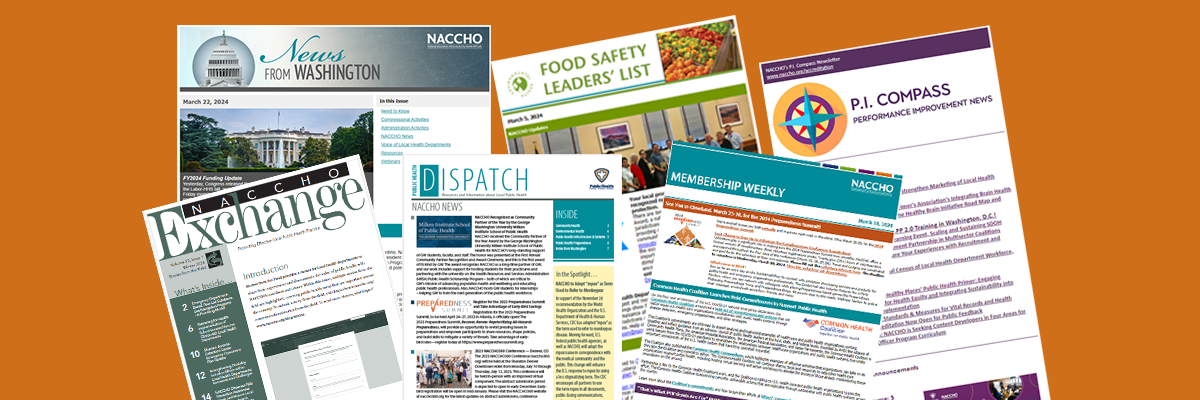
Subscribe Today
Sign Up for the E-mail Digests
Create an account or login to MyNACCHO and go to "My Subscriptions."
SUBSCRIBE NOW